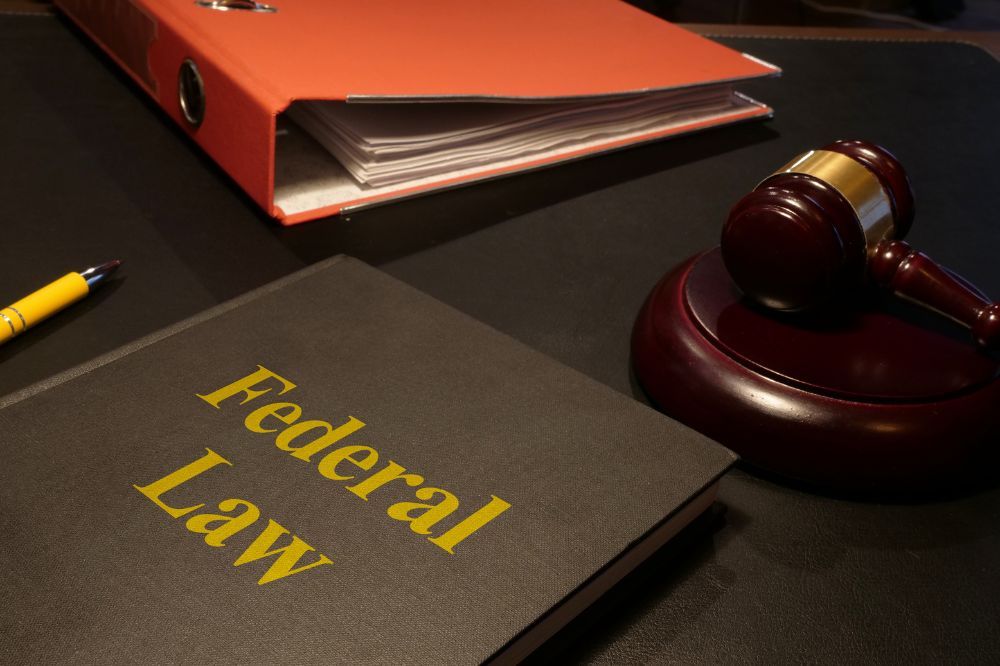Ever wondered how creditors are safeguarded in insolvency cases? Dive into the world of rights and protections for creditors in insolvency scenarios, bankruptcy cases, bankruptcy courts, secured debts, and the bankruptcy code. What shields do they have when a debtor, facing financial turmoil, files for bankruptcy in bankruptcy court? Unravel the crucial mechanisms that ensure creditors, through liquidations and collateral, are not left empty-handed when insolvency, bankruptcy filing, strikes. Understanding these safeguards can empower you to navigate potential risks and make informed decisions as a creditor. Stay tuned to explore the essential aspects of creditor rights, official creditors, and protections in insolvency cases, shedding light on what safeguards exist to mitigate financial losses. Delve into this insightful journey to grasp the vital role these rights play in maintaining balance and fairness in the realm of insolvency law.
Key Takeaways
- Know Your Rights: Understand the legal framework surrounding insolvency to protect your interests as a creditor.
- Distinguish Between Secured and Unsecured Creditors: Recognize the different rights and priorities each type of creditor holds in insolvency cases.
- Be Aware of Automatic Stay: Understand how the automatic stay affects creditors’ actions and rights during bankruptcy proceedings.
- File a Proof of Claim: Ensure you submit a proof of claim accurately and on time to secure your position as a creditor in the bankruptcy process.
- Consider Creditors’ Committees: Explore the benefits of joining or forming a creditors’ committee to collectively protect creditors’ rights and interests.
- Stay Engaged in Post-Bankruptcy Recovery: Stay informed about post-bankruptcy recovery efforts to maximize your chances of recovering debts owed to you.
Understanding Insolvency
Basics Explained
Insolvency refers to a financial state where an individual or entity cannot meet their debt obligations, leading to severe implications for creditors and the firm. Creditors in insolvency cases have fundamental rights, including the right to be informed about the proceedings and the opportunity to participate. The key steps in insolvency proceedings involve filing a petition, appointing a trustee or administrator, assessing assets, and distributing proceeds to creditors.
Types of Bankruptcy
Bankruptcy comes in various forms, each with distinct impacts on creditors. Chapter 7 bankruptcy involves liquidating assets to repay debts, prioritizing secured creditors over unsecured ones. In contrast, Chapter 13 bankruptcy allows individuals to restructure their debts through a repayment plan while ensuring official creditors’ rights are upheld in court. Corporate bankruptcy treats creditors differently from personal bankruptcy by focusing on business assets rather than personal ones.
Impact on Creditors
Insolvency cases can have significant financial and legal repercussions for creditors. Creditors may face losses due to unpaid debts or receiving only a portion of what they are owed during insolvency proceedings. To mitigate these risks, creditors can employ strategies such as negotiating payment plans, securing collateral, participating actively in the insolvency process, or transferring property.
Legal Framework
Federal Laws
Federal laws play a crucial role in governing creditor rights, official creditors, committee, firm, and property during insolvency cases. These laws establish a model law that sets the foundation for creditor protection. The Bankruptcy Code, a primary federal law, outlines the procedures and rights of creditors in bankruptcy proceedings. It provides a structured approach to ensure fair treatment for both debtors and creditors.
Key provisions within federal laws include automatic stays, which halt all collection actions upon filing for bankruptcy. This provision aims to prevent creditors from pursuing individual claims against the debtor outside of the bankruptcy process. Preferences and fraudulent transfers are addressed to maintain fairness among creditors by preventing preferential treatment of specific debts.

State Variations
State laws often introduce variations in creditor rights within insolvency cases, official creditors, property, and firm. Understanding these differences is vital for creditors as state-specific laws can significantly impact their ability to recover debts. For example, some states may offer more leniency towards debtors, making it challenging for creditors to enforce their rights effectively.
In Texas, homestead exemptions provide significant protection to debtors by safeguarding their primary residence from seizure by most creditors during insolvency proceedings. In contrast, states like New York may have stricter regulations that limit certain creditor actions or impose additional requirements for debt recovery by official creditors or firm. These variations emphasize the importance of being well-versed in state laws to navigate insolvency cases successfully.
Rights for Secured Creditors
Claim Priority
Claim priority in insolvency cases determines the order in which creditors are repaid. Secured creditors typically have higher priority than unsecured creditors. This hierarchy ensures that secured creditors receive repayment before unsecured ones.
In bankruptcy cases, claim priority is crucial as it dictates who gets paid first from the available assets of the insolvent debtor. Secured debts are usually given priority over unsecured debts due to the presence of security interests. This ensures that secured creditors have a better chance of recovering their funds.
The significance of claim priority lies in providing a structured approach to repay creditors based on their security interests. It offers protection to secured creditors by ensuring they are at the forefront of receiving repayments during insolvency proceedings.
Asset Recovery
Asset recovery for creditors involves reclaiming assets from debtors who are unable to meet their financial obligations. Creditors can utilize various methods such as seizing collateral, pursuing legal action, or negotiating with debtors to recover assets in insolvency cases.
The process of asset recovery requires strategic planning and execution by creditors to maximize their chances of retrieving funds. Challenges may arise, such as locating hidden assets or facing resistance from debtors, but opportunities exist to negotiate settlements or liquidate assets for repayment.
Asset recovery in insolvency situations presents both challenges and opportunities for creditors seeking to recoup their losses. By navigating these complexities effectively, creditors can enhance their chances of recovering funds owed to them.
Foreclosure Process
The foreclosure process allows secured creditors to repossess collateral used to secure a loan if the debtor defaults on payments. Creditors can initiate foreclosure proceedings by following legal procedures outlined in insolvency laws.
Initiating foreclosure proceedings involves notifying the debtor, providing an opportunity for rectification, and following specific timelines set forth by insolvency regulations. Legal requirements must be met throughout the process to ensure compliance with applicable laws and regulations.
Understanding the foreclosure process is essential for secured creditors as it provides a mechanism to enforce their rights in case of default by debtors. Timely initiation and adherence to legal requirements are critical aspects of successful foreclosure actions.

Rights for Unsecured Creditors
Claim Filing
Unsecured creditors play a crucial role in insolvency cases, requiring a clear understanding of the claim filing process. To begin, creditors must submit their claims to the insolvency practitioner overseeing the case. This involves detailing the amount owed, supporting documentation, and relevant information such as invoices or contracts. Accuracy in claim submission is vital to ensure that creditors receive their entitled repayments.
For successful claim filing, unsecured creditors should gather all necessary documents, including invoices, contracts, and any communication related to the debt. Providing clear and concise information will expedite the processing of claims. Keeping track of deadlines for claim submissions is essential to prevent missing out on potential repayments.
Payment Hierarchy
In insolvency cases, payment hierarchy dictates the order in which creditors are repaid from the available assets. Secured creditors typically have priority over unsecured ones. Following secured creditors, unsecured creditors are categorized into different classes based on their relationship with the insolvent entity. These classes determine the sequence of repayment.
The payment hierarchy significantly impacts unsecured creditors’ chances of recovering debts owed to them. Higher-ranking creditors, such as preferential and secured ones, are likely to receive full or partial repayments before lower-ranking creditors. Understanding this hierarchy is crucial for unsecured creditors to assess their potential recovery rates accurately.
Automatic Stay Explained
Meaning
Creditor’s rights refer to the legal entitlements held by individuals or entities to collect debts owed to them. In insolvency cases, automatic stay serves as a crucial provision that halts creditors from taking actions against debtors. This pause in proceedings allows for an organized evaluation of the debtor’s financial situation.
Understanding creditor rights is essential for all parties involved in insolvency proceedings. Creditors rely on these rights to protect their financial interests and ensure fair treatment during the resolution process. By comprehending the implications of creditor rights, stakeholders can navigate insolvency cases more effectively, promoting transparency and equitable outcomes.
Exceptions
Despite the protective measures offered by creditor rights, certain exceptions exist in insolvency cases. In some scenarios, creditors may not receive full protection under the law, leading to potential challenges in recovering debts. Exceptions can arise when debtors engage in fraudulent activities or when specific debts are deemed non-dischargeable.
Exceptions to creditor rights can significantly impact the recovery process and legal standing of creditors. When exceptions apply, creditors may face obstacles in securing repayment or enforcing their claims against debtors. Understanding these exceptions is crucial for creditors to strategize their approach and maximize their chances of successful debt recovery.
Proof of Claim
Submission Process
Submitting a proof of claim is crucial for creditors involved in insolvency cases. Creditors must follow a specific process to ensure their claims are considered valid. Firstly, creditors need to complete the necessary forms provided by the court accurately. Then, they must attach supporting documents such as invoices, contracts, or any evidence that validates the claim.
To submit a claim successfully, creditors should adhere to deadlines set by the court. Missing these deadlines can result in the claim being disregarded. It’s essential to double-check all information provided in the claim form to prevent errors that could lead to rejection.
Importance
The importance of creditor rights in insolvency cases cannot be overstated. These rights protect creditors’ interests and ensure fair treatment during bankruptcy proceedings. Creditor protection plays a vital role in maintaining financial stability by instilling confidence in lending and investment activities.
Moreover, creditor rights have far-reaching implications beyond individual cases. They contribute to the overall functioning of the economy by promoting trust and reliability in financial transactions. Without adequate creditor protections, the legal system would struggle to uphold justice and equity in insolvency matters.
Creditors’ Committees
Formation
Creditor rights in insolvency cases are established through the formation of creditors’ committees. These committees represent the collective interests of official creditors and play a crucial role in insolvency proceedings. The legal recognition of creditor rights is essential for ensuring fair treatment and distribution of assets in cases of credit default.
The formation of these committees is typically based on specific legal provisions that outline the rights and responsibilities of creditors in insolvency scenarios. These provisions serve as the foundation for establishing a framework that safeguards the interests of creditors. Factors such as transparency, accountability, and representation contribute to the creation of robust creditor rights frameworks.
Role and Powers
Creditors within these committees hold significant roles and powers during insolvency proceedings. They have the authority to review financial information, participate in decision-making processes, and approve proposed plans for debt restructuring or asset liquidation. The influence they exert can impact the overall outcome of insolvency cases significantly.
In addition to their involvement in decision-making, creditors also possess legal powers that enable them to protect their interests effectively. These powers may include the ability to challenge transactions that are detrimental to their claims, seek court intervention when necessary, and ensure compliance with insolvency laws. By exercising these powers, creditors can safeguard their rights and maximize their chances of recovering debts owed to them.
Post-Bankruptcy Recovery
Debt Reorganization
Debt reorganization offers creditors a strategic approach in insolvency cases. Creditors can actively engage in restructuring debt to recover owed funds. This process involves negotiating new terms and repayment schedules with the debtor. By participating in debt reorganization, creditors have the opportunity to maximize their recovery by potentially receiving a higher percentage of what is owed to them. However, challenges may arise, such as disagreements among creditors on the proposed restructuring plan or uncertainties regarding the debtor’s ability to fulfill the new payment terms.
Liquidation Proceedings
In liquidation proceedings, creditors can seek to recover funds by selling off the debtor’s assets. This process involves converting the assets of the bankruptcy estate into cash, which is then distributed among creditors based on priority rankings outlined in the bankruptcy code. Creditors may benefit from liquidation by receiving immediate payments from asset sales, but they may also face challenges such as delays in receiving distributions and potential losses if the value of assets is insufficient to cover all debts. It is crucial for creditors to understand the differences between liquidation and reorganization processes to make informed decisions about their recovery strategies.
Protecting Your Rights
Legal Representation
Legal representation is crucial for creditors in insolvency cases. Attorneys can provide essential guidance on navigating complex legal processes. They protect creditor rights, ensuring fair treatment and maximizing potential recoveries. Attorneys play a vital role in advocating for creditors’ interests during insolvency proceedings.
Monitoring Proceedings
Creditors must actively monitor insolvency proceedings to safeguard their rights and interests. Staying informed about case developments is essential for making strategic decisions. Effective monitoring allows creditors to track decisions that may impact their claims positively or negatively. Here are some tips for creditors to ensure effective monitoring:
- Regularly review court filings and updates
- Attend hearings or meetings related to the insolvency case
Summary
You have now gained insight into the rights and protections available for creditors in insolvency cases. Understanding the legal framework, the distinctions between secured and unsecured creditors, and the processes involved in claiming debts are crucial steps in safeguarding your interests during bankruptcy proceedings. By familiarizing yourself with creditors’ committees and post-bankruptcy recovery strategies, you can navigate insolvency scenarios more effectively and enhance your chances of recovering debts owed to you.
As you continue to protect your rights as a creditor, remember that staying informed and proactive is key. Consider seeking professional advice when needed, staying updated on relevant laws, and actively participating in the insolvency process to maximize your chances of a successful recovery. Your diligence and understanding of these rights will play a significant role in securing your financial interests in insolvency cases.
Frequently Asked Questions
What is insolvency?
Insolvency occurs when an individual or organization cannot meet their financial obligations and debts as they become due.
What rights do secured creditors have in insolvency cases?
Secured creditors have the right to repossess collateral securing their debt if the borrower defaults on payments.
What protections are available for unsecured creditors in insolvency situations?
Unsecured creditors may receive a portion of the proceeds from the sale of assets, based on their priority level, after secured creditors are paid.
How does Automatic Stay benefit creditors in insolvency cases?
Automatic Stay halts creditor collection actions upon a debtor filing for bankruptcy, providing breathing room to assess the situation and formulate a plan.
How can creditors ensure their claims are considered in insolvency proceedings?
Creditors need to file a Proof of Claim form with the court detailing the amount owed by the debtor and supporting documentation.
What role do Creditors’ Committees play in insolvency cases?
Creditors’ Committees represent the interests of all unsecured creditors and work to negotiate a fair distribution of assets from the debtor’s estate.
How can creditors protect their rights during and after bankruptcy proceedings?
Creditors should stay informed about their rights, actively participate in meetings or hearings, and seek legal counsel to navigate complex insolvency processes effectively.




